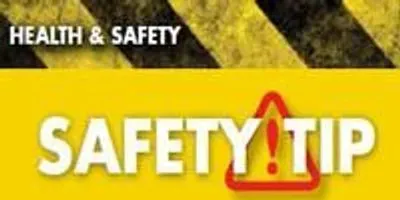
The proper storage of chemicals has become a focal point of laboratory safety. We need to keep chemicals that are incompatible separated some reasonable distance from each other. At the same time, the law of diminishing returns applies here. One can expend a significant amount of energy and not receive much additional protection for the effort.
Today, most chemical manufacturers have settled on a five-color scheme for segregating chemicals. Red for flammables, blue for health hazards, yellow for oxidizers, white for corrosives, and a fifth color for less hazardous materials. Fisher uses gray for the fifth color, Baker/Mallinckrodt uses orange, Science Kit uses green and so on.
Within these categories some additional separation is recommended. Acids and bases need some separation. They would react violently if the two broke and mixed. Within the acids group, put the oxidizing acids (perchloric and nitric) off by themselves.
Keep all your flammables (solvents, fuels, etc.) separate from your oxidizers (nitrates, perchlorates, azides, peroxides, etc.). Within each of the categories, chemicals can be arranged alphabetically.
Having said all this about segregation of chemicals, I would only add one final observation. Arrangement is last on LSI’s list of what’s important for chemical storage. Number one is security—keeping the door locked or access controlled. Number two is having adequate space. Number three is ventilation. LSI recommends one cubic foot of air per minute per square foot of floor space (with a minimum of 150CFM.) Number four is fire protection. The worst way to discover a fire in the chemical storeroom is by opening the door (It happened in New Hampshire). Have an alarm system. Number five is shelving security. How do you know that the shelving won’t tip over, fall off the wall, or collapse? You had better inspect it regularly.
Source: Kaufman, James A., Laboratory Safety Guidelines - Expanded Edition, The Laboratory Safety Institute, www.labsafetyinstitute.org.
The proper storage of chemicals has become a focal point of laboratory safety. We need to keep chemicals that are incompatible separated some reasonable distance from each other. At the same time, the law of diminishing returns applies here. One can expend a significant amount of energy and not receive much additional protection for the effort.
To continue reading this article, sign up for FREE to

Membership is FREE and provides you with instant access to eNewsletters, digital publications, article archives, and more.












